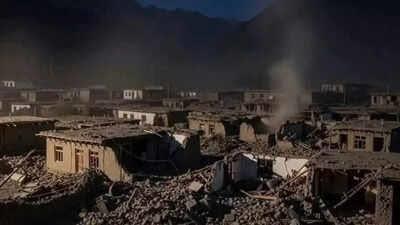Kashmir And Beyond: The Beautiful Landscapes That Conceal Deadly Faults
Quake aftermath in Afghanistan
On August 31, at exactly 19:17:34 UTC, a magnitude 6.0 earthquake struck east-northeast of Jalalabad, Afghanistan. At a shallow depth of just eight kilometres, the quake devastated densely populated areas with fragile infrastructure, claiming over 600 lives in mere minutes.
Earlier, on June 21, the same region experienced a magnitude 5.9 tremor, also shallow, that similarly caused loss of life.
These tragedies are hardly surprising, given that earthquakes are a constant threat in Afghanistan's volatile landscape. What is shocking is how unprepared the country remains. Political instability, poverty, and decades of conflict have stifled investment in infrastructure that could withstand seismic shocks.
Contrast this with nations like Japan or New Zealand, where similar earthquakes often cause minimal damage. The difference is stark: here, a natural hazard quickly becomes a human catastrophe, a deadly mix of geology and governance.
South and Southeast Asia sit on one of the planet's most restless tectonic zones. The Indian plate continues its relentless push northward into Eurasia, a movement ongoing for over 50 million years. This slow collision has built the Himalayas, the Hindu Kush, and countless valleys that sustain millions.

Legal Disclaimer:
MENAFN provides the
information “as is” without warranty of any kind. We do not accept
any responsibility or liability for the accuracy, content, images,
videos, licenses, completeness, legality, or reliability of the information
contained in this article. If you have any complaints or copyright
issues related to this article, kindly contact the provider above.
Most popular stories
Market Research

- What Is The Growth Rate Of The Europe Baby Food And Infant Formula Market In 2025?
- UK Digital Health Market To Reach USD 37.6 Billion By 2033
- Spycloud Launches Consumer Idlink Product To Empower Financial Institutions To Combat Fraud With Holistic Identity Intelligence
- Cryptogames Introduces Platform Enhancements Including Affiliate Program Changes
- What Does The Europe Cryptocurrency Market Report Reveal For 2025?
- Excellion Finance Launches MAX Yield: A Multi-Chain, Actively Managed Defi Strategy






















Comments
No comment